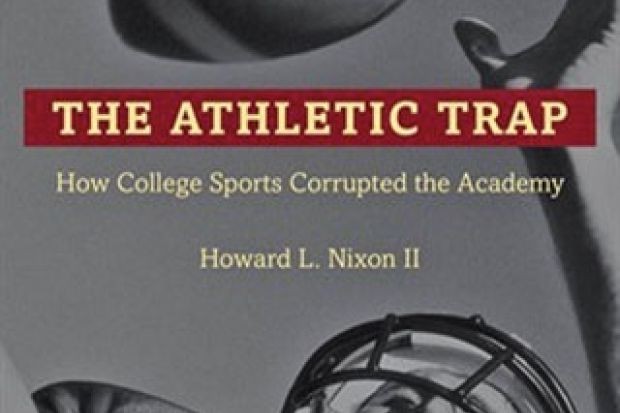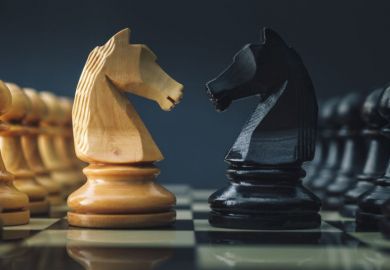I taught a module on governance in sport at a mid-major university in the US. There were a number of student-athletes on our Sport Administration programme who would sometimes need to miss classes to travel to a tournament. I mischievously asked how the coaches would feel if I requested that the student missed a practice session to spend time working on an assignment. The laughter clearly showed where classes sat in the grand scheme of things. This became the cue for referring to “athlete-students” rather than “student-athletes” as a means of discussing the governance of university sport.
While some of these young men and women enjoy a somewhat privileged existence for the four years of their university study, it is important to note that almost all athlete-students go on to a career in something other than professional sport. In The Athletic Trap, Howard Nixon draws on a lifetime of involvement in collegiate athletics to explore how sports programmes divert resources away from US universities’ academic mission. In particular, he is concerned with the programmes at so-called “Big Time Universities” in the US, and focuses largely on (American) football and men’s basketball. Some of these football matches are staged in front of 100,000-plus spectators, and television companies compete for the rights to screen the games. The coaches are often their universities’ highest-paid employees. As the rewards become bigger, there is a greater movement of teams between conferences and we see the same posturing and politicking that has become ever more visible in professional sport across the globe.
Nixon makes good use of a variety of media reports in presenting the narrative, and the sheer scale of the finances involved in this business are frequently cited to show why sport matters to universities. Strong athletics programmes and successful teams are believed to contribute to increased enrolments, better student morale and improved alumni engagement. Yet the reality is that only a few of these athletics departments make a profit and many are heavily subsidised by powerful boosters, the universities and their fee-paying students.
The Athletic Trap is underpinned by sociological analysis, but it might have been enhanced by wider reference to the sport management literature. Scholars have long discussed the unpaid labour of college athletes but few have critically assessed the unpaid labour of sport management students and others in related fields that service and support athletics programmes. In an increasingly crowded, competitive job market, there is ever-greater pressure for students to “volunteer” their time. In areas such as sport and event management, poor practical experiences directly related to their programme of study may actually turn students away from aspiring to a career in their chosen subject.
Another area not discussed here is the internationalisation of collegiate sport and the increased migration of student-athletes into US universities from abroad. While this is less relevant to American football, it is much more so in sports such as basketball. Internationalisation is at the forefront of the work of many university presidents and the migration of students, athletes, coaches and academic staff is important to the changing landscape of international higher education.
The recent scandals relating to some of the US’ biggest football programmes offer Nixon an opportunity to focus on issues that have received limited academic attention to date. These stories clearly highlight the reality that star athletes, coaches and administrators are revered and protected. University leaders’ role in these scandals is shown to focus, in the main, on damage limitation rather than driving forward any change. This evidences the central polemic of Nixon’s thesis as to how college sport has corrupted the academy.
Nixon’s concluding observation is that the athletics trap is part illusion and part reality. He makes a powerful case for a revised structure that would allow student-athletes to compete in a variety of sports, while confining the highly commercialised version to a handful of institutions that could then openly acknowledge and facilitate professionalism in collegiate athletics. It is a vision many would support, but the prospect of ever being able to implement such significant change looks decidedly like a long shot.
The Athletic Trap: How College Sports Corrupted the Academy
By Howard L. Nixon II
Johns Hopkins University Press, 232pp, £19.50
ISBN 9781421411958 and 1965 (e-book)
Published 15 April 2014
Register to continue
Why register?
- Registration is free and only takes a moment
- Once registered, you can read 3 articles a month
- Sign up for our newsletter
Subscribe
Or subscribe for unlimited access to:
- Unlimited access to news, views, insights & reviews
- Digital editions
- Digital access to THE’s university and college rankings analysis
Already registered or a current subscriber? Login





